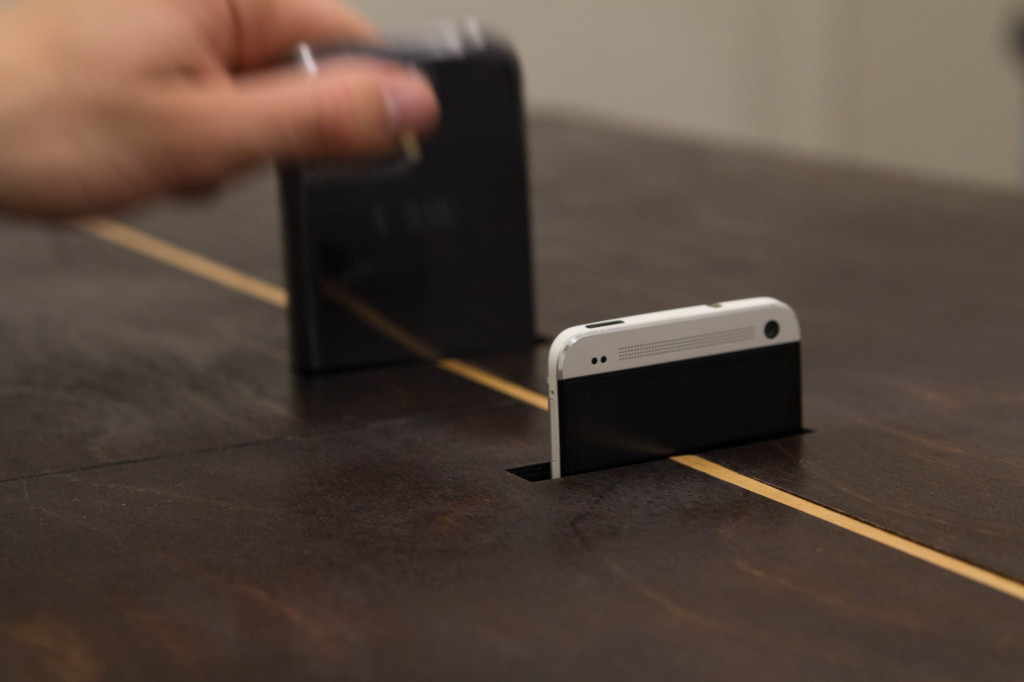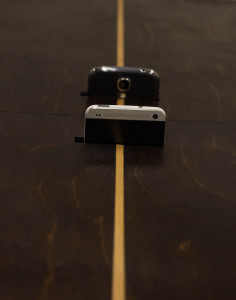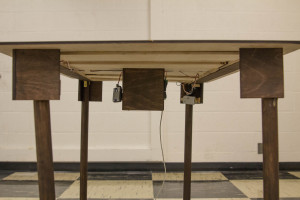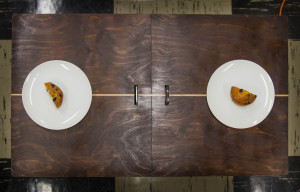1B – Arduino Project – Conversation Table
|
Group Members: Jeffrey Houng, Joseph Mallonee, Jesse Klein Roles: Jesse Klein as Tutor, Designer, Integrator; Joseph Mallonee as Integrator, Designer, Scribe; Jeffrey Houng as Designer, Scribe, and Integrator. Introduction The phones in our pockets, purses, hands, and on our bedside tables make us reachable and accountable 24/7. There are few moments as insignificant and as terrifying as 1% battery, and few habits are more ingrained as charging your mobile phone every night to wake up and check it in the morning. We love our friends and our families and we love knowing what’s happening around us whether we find out by hashtag or headline. However, when we’re with our family and friends the draw to check our phones can be distracting and overwhelming. The modern dinner ritual is often to sit down at a meal, pull out your phone for a moment, and return it to your pocket or simply put it on the table – scanning your peripheral vision constantly for a blinking light or illuminated screen. The draw of the contemporary phone is the potential to reach other people at optional levels of aggressiveness: we can call, text, message on Facebook, send a Snapchat, and more. In turn, we also feel obligated and responsible for checking our phones and replying. How many times have you apologized for responding “late” to a text or call in the past week or month? Mobile phones are obviously fantastic for getting in touch with people remotely, as that’s what they’re built for, but so often our generation’s beloved avatars spoil the face to face conversation and engagement we scheduled time for anyways. Even if the company is great, we use our phones to check facts during conversation to prove points, to text someone back who couldn’t make it to dinner, and maybe check someone’s Instagram to discuss their vacation. Sometimes we feel so obligated to respond to both the people pinging us and the people sitting across from us that it can be heart wrenching. We’re trying to be in two places at once sometimes, but when we want an occasional break to the information and “commitmental onslaught” that our phones represent it’s hard to find. Sometimes, we want to have a conversation with someone that isn’t about reading facts off of Wikipedia, or checking to see what time movies are playing on a theater’s mobile site. Sometimes we just want to talk to the person across from us about them, rather than hear about the person they were texting or be so distracted from your own phone you miss out on what the person is saying. We also want to know that they’re engaged with us whether we’re talking or listening, and here’s where the Conversation Table comes into play. It’s a conceptual approach for how the environment can respond to your decisions with polite commentary: when you use your phone in the set conversation time, it causes the other person’s end of the table to wobble, and vice versa. It’s about accountability and connection. Meet the conceptual conversation table, or “Wobbl.” Video Technical Notes Conversation Table uses analog infrared distance sensors that recognize if a phone is or is not in the slot. This then triggers either side of the table to get wobbly, via two medium sized continuous rotation servos which drive a bolt into a nut inside of a stationary leg, thus creating a makeshift linear actuator. The table itself is constructed out of 1/4″ plywood which was laser cut and hand stained.
|






